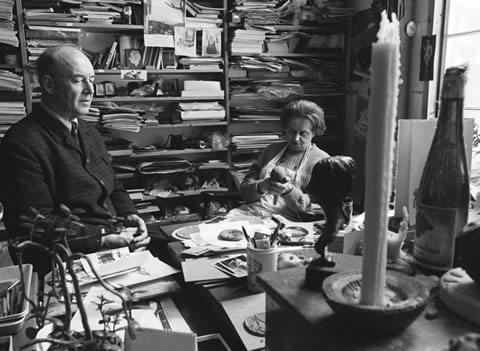In 1969, John Tuzo Wilson sat still, holding his chin level and expression neutral, as sculptor Dora de Pédery-Hunt moulded a miniature bust of his features in her cluttered Toronto studio.
Wilson was the second principal of Erindale College (now U of T Mississauga) and a professor of geophysics. A world-renowned scholar who specialized in plate tectonics, Wilson was shaping ideas about the earth: he was an early proponent of the continental drift theory. De Pédery-Hunt was, more literally, shaping earth that day, as she conjured Wilson’s likeness in modelling clay. The Hungarian-born artist was best known for her work as a medallist; she also designed the profile of Queen Elizabeth II that appears on Canadian coins minted between 1990 and 2003.
The bust, which was cast in bronze, was commissioned by an Erindale art committee composed primarily of students and staff. The college’s early mandate was to broaden intellectual pursuits beyond the classroom to include public lectures, musical events, and exhibitions of paintings and sculptures. De Pédery-Hunt’s niece, Ildiko Hencz, recalls attending dinner parties at the principal’s residence with her aunt in the 1960s and says that the artist and her subject were connected through a social network of scientists, artists and intellectuals.
The bust is now in possession of Wilson’s daughter, Patty Proctor, assistant curator of Chinese Ceramics at the Royal Ontario Museum. It serves as a most elegant reminder of the seven years her father guided Erindale.
Recent Posts
People Worry That AI Will Replace Workers. But It Could Make Some More Productive
These scholars say artificial intelligence could help reduce income inequality
A Sentinel for Global Health
AI is promising a better – and faster – way to monitor the world for emerging medical threats
The Age of Deception
AI is generating a disinformation arms race. The window to stop it may be closing





